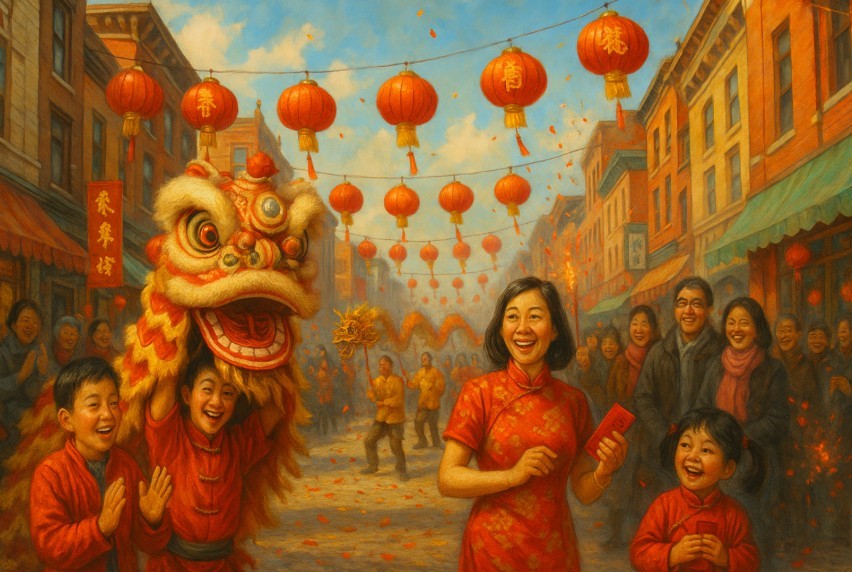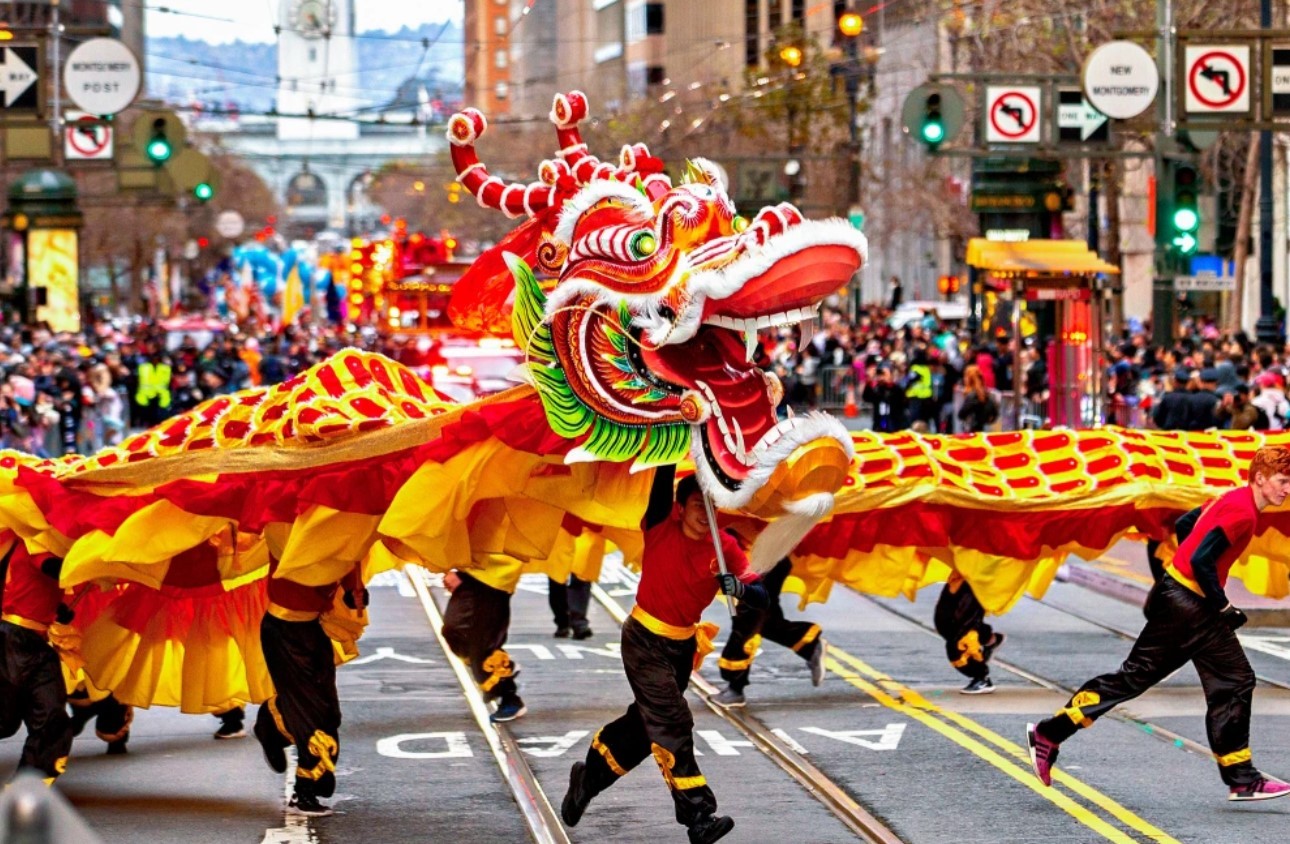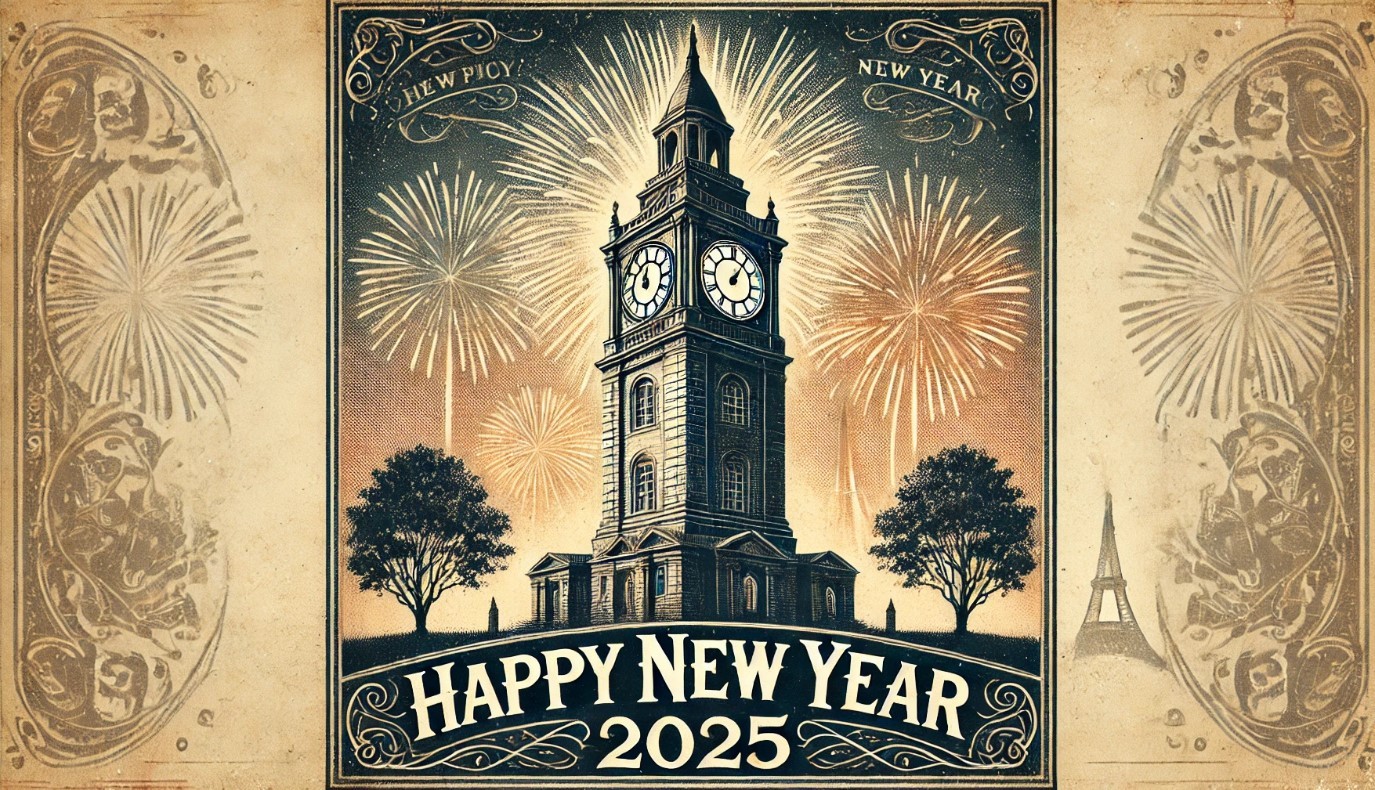Lunar New Year: Facts about the year of OX, Traditions, Customs
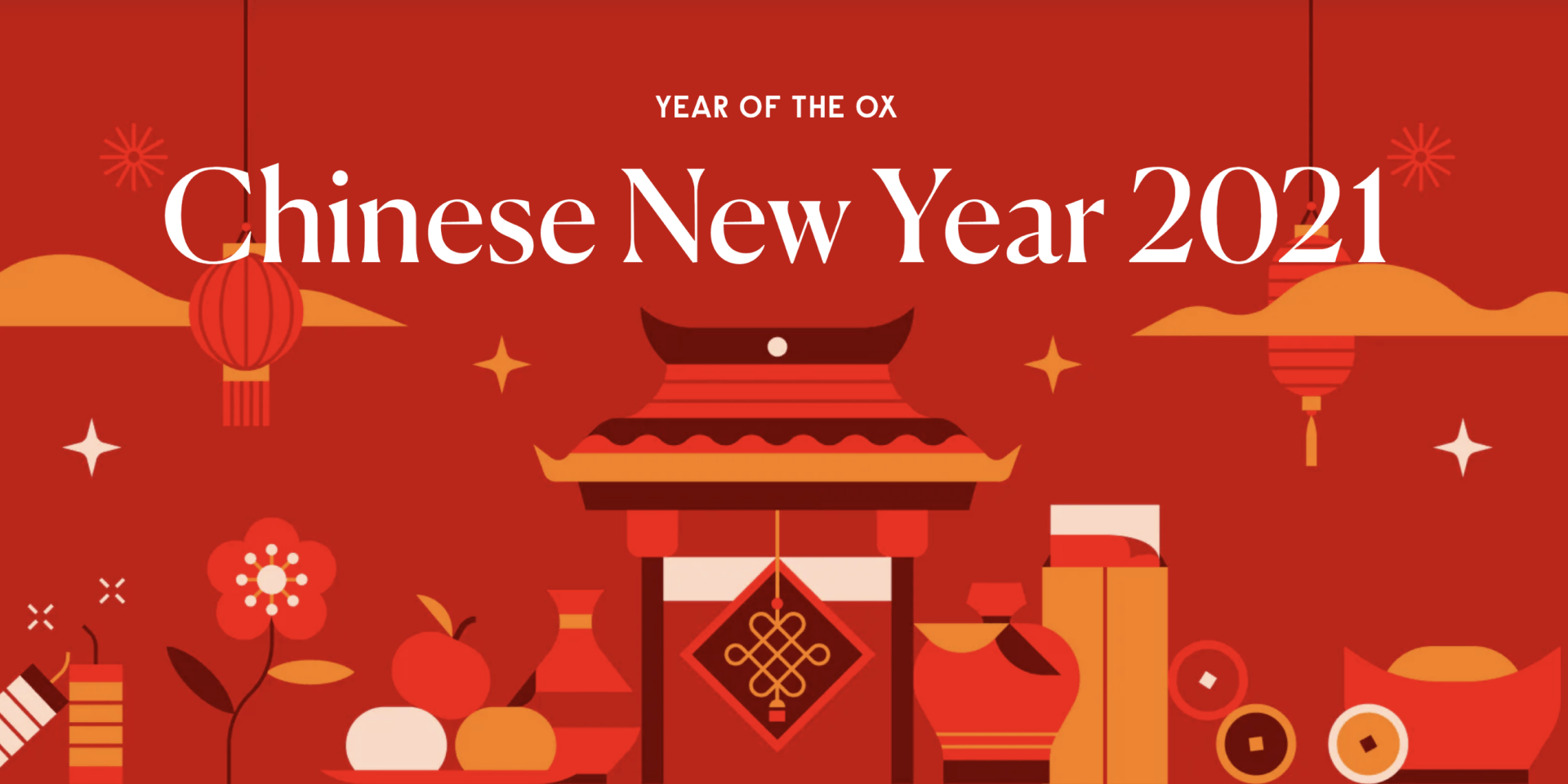 |
| Photo: Chinese New Year |
Tradition of Chinese New Year
The Chinese Calendar is a lunisolar calendar, which means that it’s based on astronomical observations of the Sun’s position in the sky and the Moon’s phases. This ancient calendar dates back to 14th century BCE (whereas the Gregorian calendar was introduced in 1582). The Chinese lunisolar calendar shares some similarities with the Hebrew calendar, which is also lunisolar.
Because the Chinese calendar defines the lunar month with the winter solstice as the 11th month, Chinese New Year usually falls on the second new moon after the winter solstice.
Just like New Year according to the Gregorian calendar (January 1), Chinese New Year celebrations start on the night before the first day of the new year.
(Note: China follows the Gregorian calendar for daily business, but still follows the Chinese calendar for important festivals, auspicious dates such as wedding dates, and the Moon phases.)
HOW IS LUNAR NEW YEAR CELEBRATED?
 |
| Longevity Noodles is believed to lengthen your life (Photo: Food Republic) |
As with many winter solstice celebrations, the symbolic darkness of night is banished by the light of fireworks, lanterns, and candles. Man-made paper lanterns are hung by the hundreds in public areas, bringing good luck to the new year.
There are dragon dances, performances, and festival parades with music and acrobatics. The festivities continue for two weeks, finishing with a special lantern festival, which signals the end of the New Year celebration period.
Of course, much delicious food is made and served! For the New Year, it’s traditional to serve long noodles, symbolizing a long life. See our recipe for Longevity Noodles.
Another popular recipe for New Year is Chinese Dumplings, symbolizing good luck and wealth. Families wrap them up and eat them as the clock strikes midnight.
“Good Luck” is also a common theme of the New Year. Many children receive “lucky money” in red envelopes. Sometimes offerings are made to temples, as shows almanac.
Lunar New Year Customs in China
1. Cleaning Up
House CleaningCleaning the house is a long-observed Chinese New Year tradition. The ground, the walls, and every corner of the house need to be cleaned, according to Travel China Guide.
In Chinese, “Dust” is a homophone for the word “Chen", meaning the old. Therefore a year-end cleaning is needed to drive the old things or the bad luck away from the house, and get ready for a new start.
2. New Year Shopping
New Year ShoppingAfter cleaning people will go shopping, from a new piece of furniture to a new plate. Chinese people believe that since this is a year anew they should buy a lot of new things. Purchasing new items symbolizes welcoming new things and getting ready for a new start.
A variety of foods are sure in their shopping list. Meat, vegetables, fruits are must, while candies and nuts are popular items which are later seen on the tea table of every Chinese household.
3. Paste Spring Festival Couplets
Spring Festival CoupletsCouplets are typically pasted on doorways as a part of the festival's decoration. The custom of pasting Spring Festival couplets can be traced back over 1,000 years to the Later Shu State (934 - 965). The original form of modern couplets was called “Taofu”, a piece of peach wood protecting against evil without any writing on. In the Song Dynasty (960 - 1279), the antithetical couplets began to be written on the wood to express people's good wishes. Later, the modern form of couplets appeared replacing the peach wood with the red paper. The couplets include two veritcal scrolls on two sides and a horizontal scroll on the top.
4. Paste the “Fu” Character
 |
Paste Fu CharacterThe character “Fu”, meaning good fortune or happiness, is used to express people's good wish and yearning for the future, so people usually paste it on the gates or some furniture in the house during the Chinese New Year. Pasting the “Fu” upside down, meaning the arrival of happiness or good fortune, is a widely accepted custom among Chinese people.
In ancient time, this character and the couplets were written by hand, but now, people can buy printed ones. Some shops even present these printed works to their customers.
5. Chinese Knots
Chinese KnotThey are prepared to decorate houses during the festival. They were first used to string jade pendants on clothes as decorations and these knots were widely used as decorations on traditional Chinese musical instruments.
Now there are small Chinese knots used as gifts or curtain decorations, and also big ones as hanging ornaments in the house.
6. Paste Window Paper-Cuts
Paper-cutThe time-honored handicraft of paper-cuts carries carries people’s good wishes. Auspicious words or patterns are cut on red paper, recording the happy moments in life or imagining the better life of the New Year.
The paper-cuts of Fu character are the most popular pattern. People paste them on windows or furniture.
7. Door Gods Pictures
Door Gods PicturesIn Taoism and ancient folk custom, the Gods of the Door, are among the most popular gods for ancient Chinese people. They are in a pair, usually in the images of the deified generals of the Tang Dynasty (618 -907) – Qin Qiong and Yuchi Gong.
During the Chinese New Year, people paste their pictures on the doors to drive away the evil spirits, keep the house safe, and encourage the good fortune.
8. New Year Pictures
Chinese New Year PictureThey originated from the Door Gods pictures in the Han Dynasty (202BC - 220AD), and became a popular activity since the Song Dynasty. The mature craft of woodblock carving at that time enabled people to make various life scenes alive, such as their harvest parties, worship formalities, and religious ceremonies.
Later, more themes like women and babies, opera performance, and zodiac animal signs are included in the pictures.
9. Family Reunion Dinner
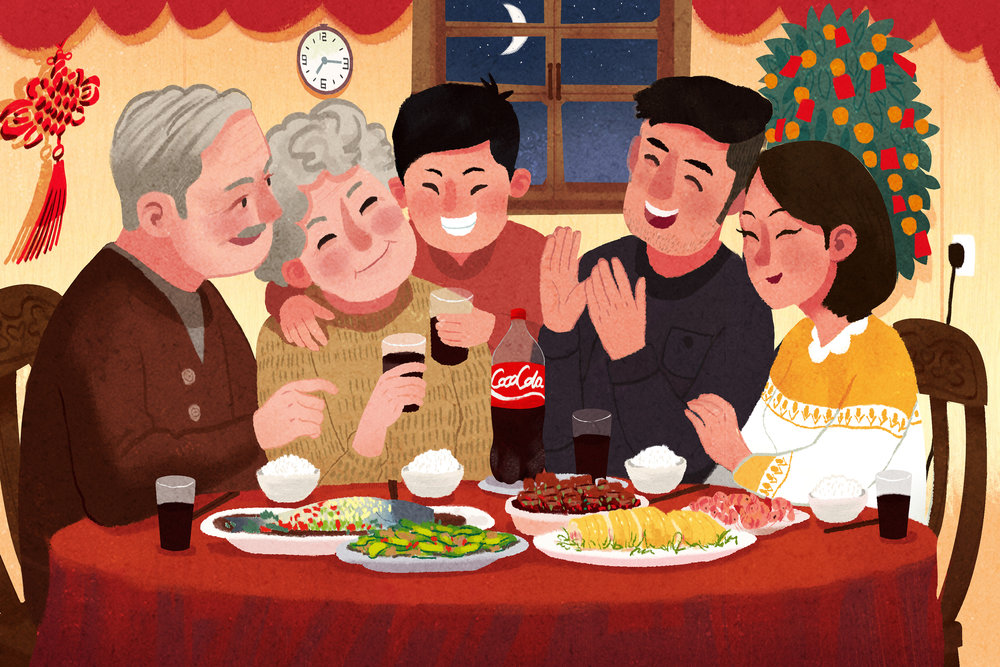 |
Family Reunion DinnerAs the festival approaches, family reunion becomes the major concern of every Chinese. No matter how far apart of the family members, they would get back home for the biggest annual gathering. A luxurious home-made dinner is served, containing many dishes with not only delicious taste, but also good appearance and auspicious connotations. Besides the dumplings, a whole fish is a must, standing for a surplus and fortune of the New Year.
10. Eating Dumplings
Eat dumplingsThe most important food during Chinese New Year is the dumplings, which are made with flour and stuffed with different fillings. It is a custom to eat dumplings on the New Year’s Eve, the 1st and the 5th day of the New Year. Because their shape resembles the monetary ingots used in ancient times, dumplings are believed to bring wealth in the coming year. People wrap coins, candies, or peanuts in some of the dumplings to express different blessing, for example a coin for wealth, candy for sweet life, and peanuts for health and longevity.
11. Glutimous Rice Balls
Glutinous Rice BallsIn south China, the Glutinous Rice Ball, Yuanxiao or Tangyuan in Chinese, is a traditional food for the Chinese New Year, just as the dumplings in north China. The balls are made of sticky rice flour stuffed with different fillings. Some do not have fillings. Their round shape symbolizes reunion, harmony and happiness. In north China, the Glutinous Rice Balls are eaten only on the Lantern Festival, when family members gather together and appreciate the first full moon of a lunar year.
12. CCTV New Year's Gala
New Year GalaCCTV New Year's Gala is a comprehensive art and performance event on the festival's eve. First broadcasted in 1983, it has become a beloved performance including skits, cross talk, acrobatics, songs and dances.
The gala starts at 20:00, with a countdown at 0:00, and ends with the song “Cannot Forget Tonight” at about 0:30.
13. Firecrackers and Fireworks
FireworkFirecrackers are always set off at midnight. In some places, people also set off firecrackers on the morning of the first day of the New Year. The use of firecrackers can be traced to the legend of the Monster Nian in 2,000 years ago, when people threw bamboo into the fire to drive away the monster. After gunpowder was invented, firecrackers replaced the bamboo. Because fires can be easily started by the firecrackers, many places ban firecrackers except in designated areas.
14. Send Greeting Messages
Send Greeting MessagesDuring the festival and especially on the New Year’s Eve, people send greetings to relatives, colleagues, and friends through phone.
They use instant messenger like Wechat, to send text and voice messages, emoticons, videos, and digital red envelopes to express good wishes.
15. Send Greeting Cards
New Year CardIn the past, people sent New Year cards to their friends, parents, and relatives during the happy event especially when they were not going to be with them on the festival. Words of blessing are written on the cards similar to Christmas cards in western countries. Now, with the advance of technology, the form of cards has changed, while the custom of sending cards continues, with both paper cards and digital ones.
16. Give Red Envelopes
Red EnvelopesRed envelope, also known as lucky money, is prepared for children by the elderly and given after the reunion dinner. In folk culture, children will live safe and sound for the whole year if they get the lucky money. This custom still remains and the amount of money is increasing.
Children use the money to buy books or other school supplies. Some families save the money for the kids’ future use.
17. Wear New Clothes
New Year ClothesChinese people prefer everything new for the festival. Generally it is the duty of the middle generation of a family to buy new clothes for all family members. Although some adults do not follow this custom any more, every child wear brand new clothes on the New Year’s Day, from head to toe.
For people in his or her zodiac year of birth, a piece of new clothing in red is needed. Red underwear is popular, while a red overcoat is also a common choice.
18. Visit Friends and Relatives
A special way for people to express good wishes to each other and an important Chinese New Year tradition is to visit relatives. Generally speaking, people drop in at relatives and friends' houses, bringing gifts or red envelopes, and greeting one another with 'Happy New Year'. In some rural places, where families have many relatives, this activity lasts for several days. It is impolite to visit someone without a gift. Therefore, special local products, fruits, and wines should be taken when you visit others.
19. Temple Fairs
Temple FairTemple fair is an old practice of Chinese New Year customs, especially in Beijing. Although they originally were a form of worship connected with temples, now they are more like carnivals and are sometimes held in parks. Traditional cultural performances such as playing diabolo, traditional magic, puppet shows and so on can be seen. Besides, people can buy all kinds of small commodities at very low prices. During and after the festival, Beijing has temple fairs almost every day in different places such as Wangfujing, Altar of the Earth and Longtan Park.
20. Watch Colorful Lanterns
Lantern ShowThe Lantern Festival marks the end of the festival. Lanterns in different shapes are displayed on the evening of the 15th day of the 1st lunar month. In ancient times, these lanterns were made of paper or silk with candles placed inside. Now the materials have changed and the candles have replaced by bulbs or LEDs.
In many cities, there are lantern fairs held in some historical sites or landmark buildings, where visitors can enjoy the beauty of the traditional Chinese art.
Lunar New Year Customs in Vietnam
1. Admiring peach blossoms
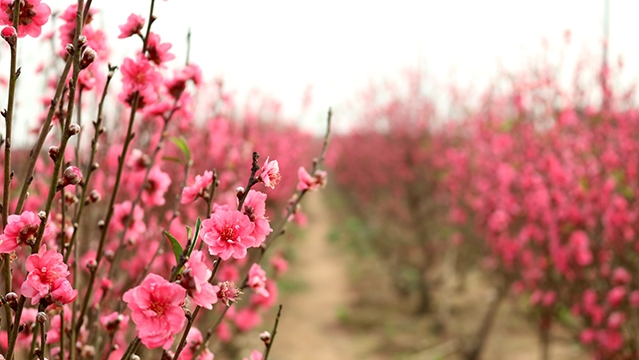 |
Tet atmosphere really starts on December. Those who planted Peach blossom (Northern of Vietnam) and Apricot blossom (Southern of Vietnam) know that in this day, people have to remove the leaves for the flower to bloom on the first day of the Lunar New Year. Not everyone is doing this job because it is difficult to count the right day for changing factor such as weather, however, playing peach blossom, apricot blossom on Tet is a tradition, and making the flowers blooming on the first day of Tet only presents in Vietnam.
Time flies, the Tet holiday also has changed, but the traditional admiring flowers in Tet is still maintained until today with the more variety of flowers such as orchids, chrysanthemums, tulips ... planted from the country and imported from abroad.
2. Tien Ong Tao - Farewell ceremony to the Kitchen Gods
 |
Legend has it that in every household since human has discovered the use of fire, Land Genie and Kitchen Gods has been there in the house to protect their people. The Kitchen Gods are the gods of the kitchen who governs the cooking in each family, with the belief that "everything can be done after we eat". A kitchen has three Kitchen Gods.
Seven days (the 23rd night of the last lunar month) prior to Tet, each Vietnamese family offers a farewell ceremony for the Kitchen Gods and their means of transport - carps to go up to Heaven Palace. His task is to make an annual report to the Jade Emperor of the family's affairs throughout the year. The farewell ceremony for the Kitchen Gods to heaven is a beautiful custom with spiritual meaning.
3. Banh Chung, Banh Day - Sticky rice cake
One of the most traditional special foods for New Years (Tet) of Vietnamese is Banh Chung or sticky rice cake. Banh Chung is made of sticky rice, pork meat and green bean, every ingredient is wrapper inside a special leaf which calls Dong. Making the Banh Chung requires care and precision in every step while also requires skillful hands to make it a perfect square.
Every year during the New Year celebration, the Vietnamese people have to cook Banh Chung and Banh Day and use them as special offerings to their ancestors and enjoying it during the Tet celebrations.
4. Giao Thua - Lunar New Year Eve
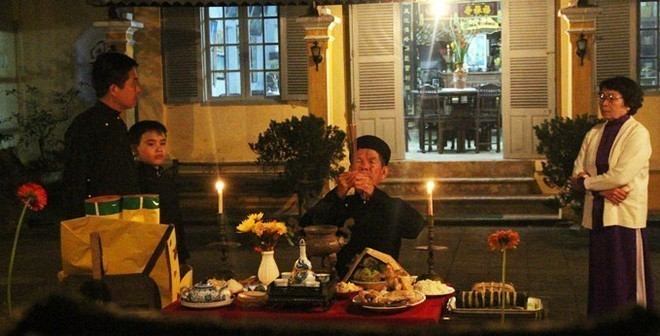 |
In a literal translation, it means "Passage from the Old to the New Year" and in the Vietnamese belief, this is the time when heaven and earth meet. Vietnamese people believe that there are 12 Sacred Animals from the Zodiac taking turn monitoring and controlling the affairs of the earth. Thus, Giao Thua (New Year's Eve)is the moment of seeing the old chief end his ruling term and pass his power to the new chief.
Giao Thua is also the time for Ong Tao (Kitchen God) to return to earth after making the report to the Jade Emperor. Every single family should offer an open-air ceremony to welcome him back to their kitchen with vegetarian food or normal food. Along with that, there must always five type of fruits on the Vietnamese altar, including bananas (banana), grapefruit, mandarin, citrus in the south, and custard, coconut, papaya, mango and fig.
5. Li Xi - Lucky money
This is a cultural practice that has been maintained for generations, and has been an indispensable part in Vietnam’s customs of Tet Holiday , especially with children. In the Lunar New Year, when meeting the adult, children will wish them for a happy new year and great health, showing respect and gratitude. After that, it is the adults’ turn to give good advice and words of wisdom, encouraging the younger ones to keep up with the schoolwork, live harmoniously with others, and obey their parents and then giving them lucky money in a red envelope to welcome their new age.
Besides the money, the tiny red envelope also has its own meaning. It represents the secrecy and privacy to avoid comparison; as adults want the children regard the money as the gift of New Year, instead of being jealous of receiving less than other kids. Moreover, the red color, the most popular color appearing in Vietnamese festivals, symbolizes luck and wealth according to Asian’s beliefs.
Facts about Chinese New Year and the year of OX
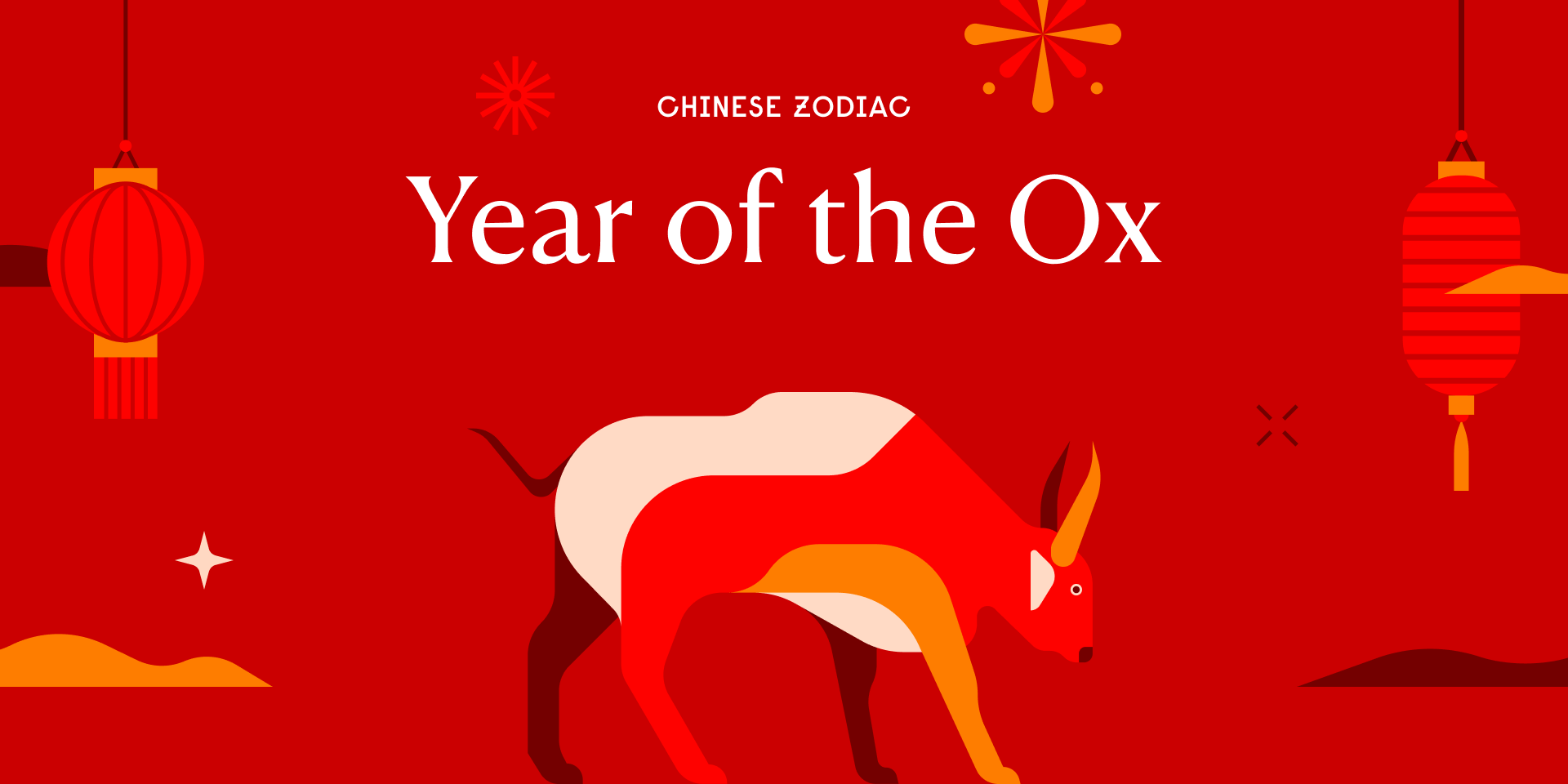 |
| Photo: Chinese New Year |
It is also called Spring Festival.
The festival usually falls after the solar term, Beginning of Spring (Li Chun), and is a festival in the spring, hence the name.
Chinese New Year starts a new animal’s zodiac year.
In China, each lunar cycle has 60 years and 12 years is regarded as a small cycle. Each of the 12 years is defined by an animal sign: Rat, Ox, Tiger, Rabbit, Dragon, Snake, Horse, Sheep, Monkey, Rooster, Dog, and Pig. 2021 is the year of the Metal Ox. Other recent Ox years are 1937, 1949, 1961, 1973, 1985, 1997, 2009, 2021, 2033. The Ox is a “yang” and also a water sign. The closest Western correspondent sign is the Capricorn.
The Chinese mythology claims that Nian was a creature that lived under the sea or on top of mountains. It is said that every year at the beginning of the Spring Festival, the Nian would come out of hiding to eat the crops and sometimes the villagers. People discovered how to scare him away with red lanterns and explosions of fireworks, which led the traditional New Year’s celebration.
The celebration lasts for 15 days till Lantern Festival.
The peak time of the entire celebration is on Chinese New Year's Eve and the first day of the lunar new year. The 15th day is called Lantern Festival, marking the end of the celebration, cites travelchinaguide.
One sixth of the world’s people celebrate it.
It is not only celebrated in Mainland China, but also observed in Hong Kong, Taiwan, Vietnam, Singapore and some other Asian countries as well as Chinatowns around the world.
In recent years, the celebrations in New York, London, Vancouver, Sydney and other overseas cities have spread out of Chinatowns. Chinese New Year has become one of the world’s most celebrated festivals.
It is the longest public holiday and the whole country is on the move.
Most employees have 7-12 days off the work, and students have one month winter vacation. The 2021 Chinese New Year holiday is from Feruary 11th to 17th.
No matter where they are, people try their best to return home for a family reunion, like westerners attempting to spend Christmas with their families. Meanwhile, some families travel together during the holiday. This makes the world’s largest annual migration, known as the Spring Festival Travel Rush. The total trips made by plane, train, bus and ship can reach nearly 3 billion.
Reunion dinner is a ritual.
The reunion dinner on Chinese New Year's Eve is a big feast to commemorate the past year. This is the most important time to be with families.
After the reunion dinner, families sit together to watch the CCTV New Year's Gala while chatting. As the most watched TV program, the gala collects various well-selected performances, targeting audiences of different generations.
Then comes the annual largest usage of fireworks on the planet.
Fireworks are an indispensable part of the celebration to liven up the air of Spring Festival. All families set off fireworks to celebrate the festival. The biggest firework show is on Lunar New Year's Eve.
The celebration decorations are mostly in red.
Houses are decorated with red Spring Festival couplets, red lanterns, and red paper cuttings; city streets are lit up by red lanterns; and numerous people are dressed in red. This is because red in Chinese culture is the symbol of happiness, wealth and prosperity, and can ward off evil spirits and bring good luck. These red decorations are to the festival what Christmas trees are to Christmas.
“Guo Nian Hao” is one of the most used greetings.
This is like the westerners saying “Merry Christmas” to each other on Christmas Day. It means “Happy New Year”.
Why is the celebration also called "Guo Nian"? "Nian”is the Chinese word for year. In folk culture, the Spring Festival celebration is also called “Guo Nian” (meaning “passing a year”). In a Chinese New Year story, “Nian” is a fierce and cruel monster which eats livestock and kids, but it is scared of red color and cracker sound. Therefore, people use red decorations and fireworks to drive away “Nian”.
New year's important celebrations
| Making amends, reconciling with people, avoiding offenses, and reestablishing relationships and friendships are important things to accomplish before the New Year. Silk, paper and bamboo dragons are part of the New Year celebration. Dragons are legendary creatures that are helpful and friendly. They are known to scare away evil spirits, bring wisdom, good luck, wealth and prosperity. A Hoi Nin prayer is said by business people on the second day of Chinese New Year to attract good luck and prosperity in their business for the year, according to thechinesezodiac. |
For more articles around Chinese Lunar New Year of 2021, please click here!
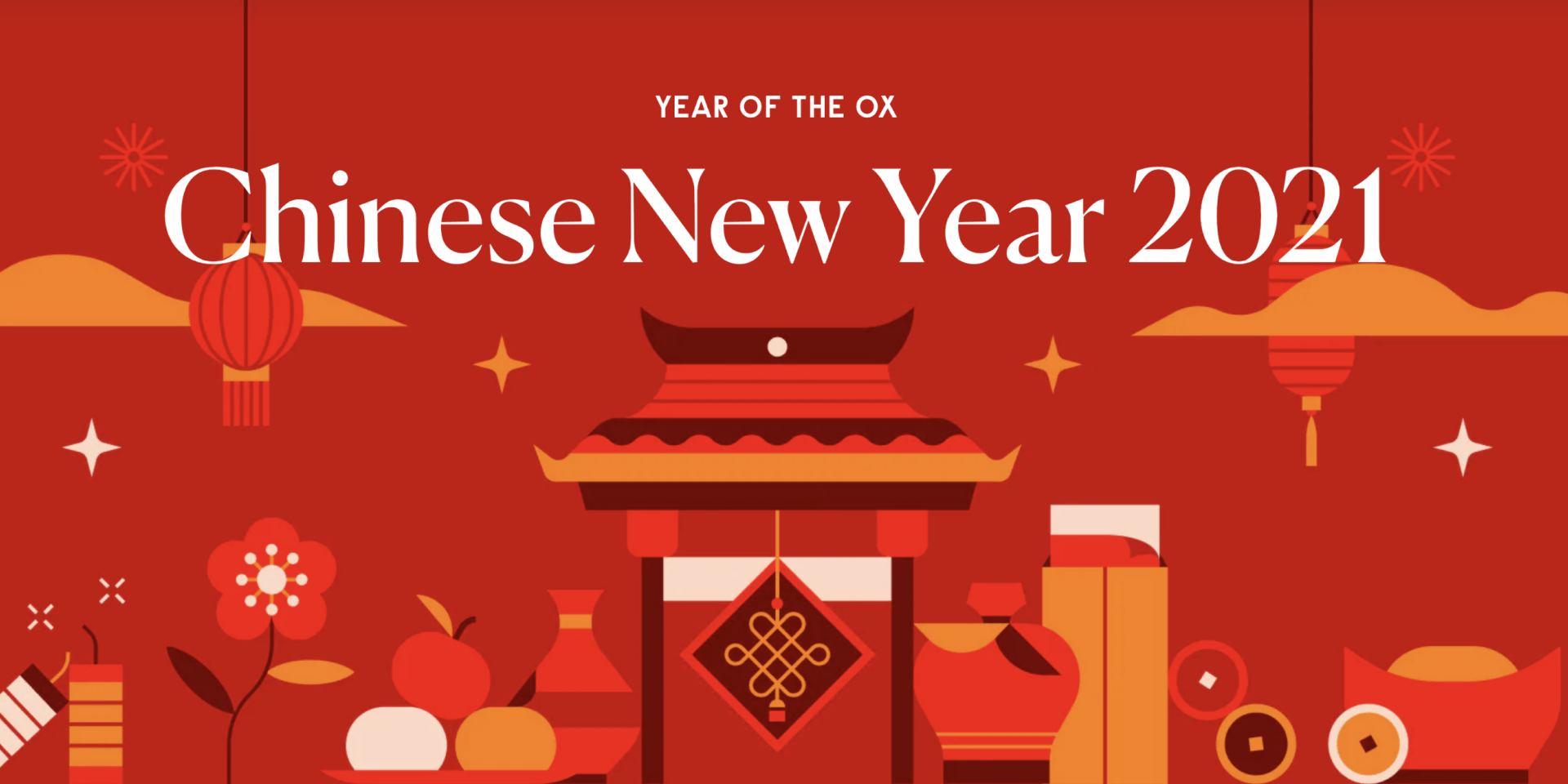 Chinese Lunar New Year 2021: Red Costumes, Tips to Wear For a Lucky Year Chinese Lunar New Year 2021: Red Costumes, Tips to Wear For a Lucky Year Chinese New Year, Lunar New Year, is around the corner! Wishing you a lucky 2021 and a full-of-happiness year with those recommended clothes and ... |
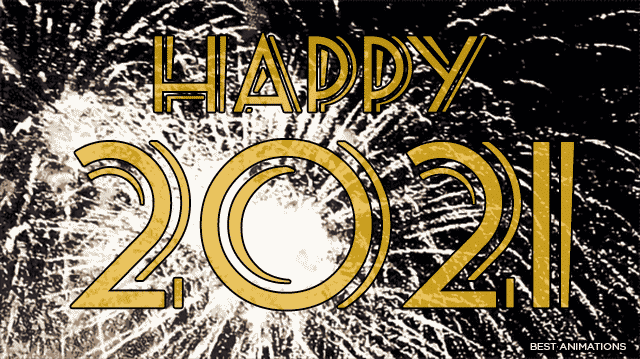 Chinese Lunar New Year 2021: How to Say Happy New Year in 35 Languages, Best Wishes, Quotes and Greetings Chinese Lunar New Year 2021: How to Say Happy New Year in 35 Languages, Best Wishes, Quotes and Greetings Chinese Lunar New Year 2021: ALL around the world, New Year's Day is celebrated - but how we wish each other a Happy New Year ... |
 Chinese Lunar New Year: How Festivities Different in Each Country, Ideas for Virtual Celebration Chinese Lunar New Year: How Festivities Different in Each Country, Ideas for Virtual Celebration Chinese New Year is around the corner and each country having its own traditional way to celebrate one of the most significant occasions of ... |
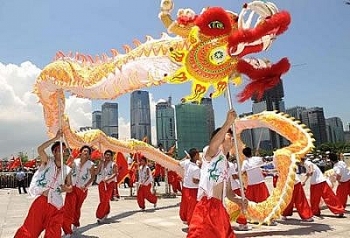 Chinese Lunar New Year: History, Significance, Do and Don’t Things Chinese Lunar New Year: History, Significance, Do and Don’t Things Lunar New Year is associating with the Chinese New Year and Spring Festival which often celebrated among some Asian countries including China, Vietnam... Lunar New ... |

